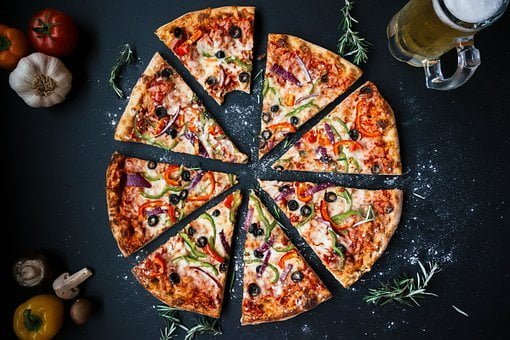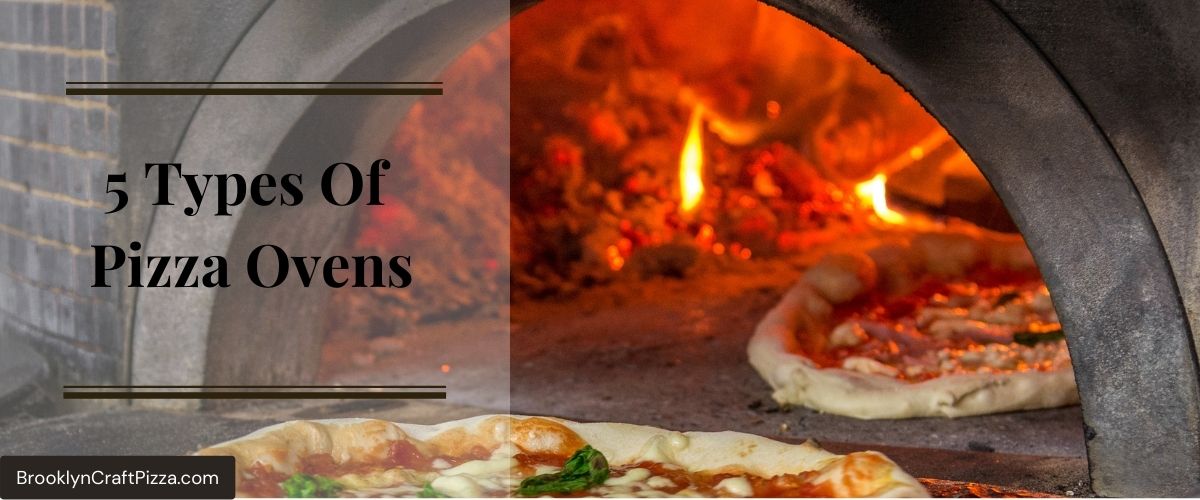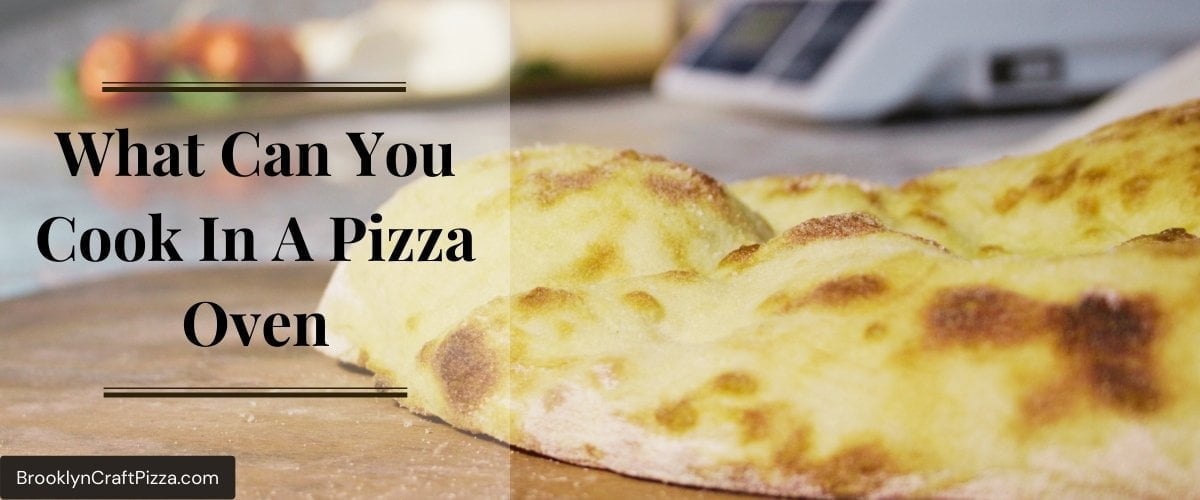Are you a fan of homemade pizza or planning to cook your family a crispy, delicious pizza for the weekend? You may think you need an oven to make this happen, which is not the case! Stovetop pizza is equally as delicious and can allow your family to have a good time.
So, most people ask, “How can I cook pizza without an oven? There are multiple ways of cooking pizza without an oven: Using a skillet and grilling are the two most common options. This article highlights everything you need to cook pizza without an oven, a step-by-step process on how to cook pizza without an oven, and the benefits of making pizza yourself. Let’s delve in!
Cooking Items and Ingredients for Cooking Pizza Without Oven
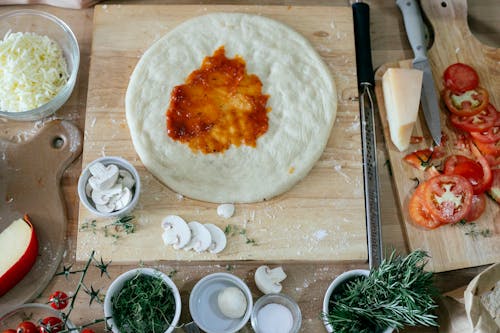
Image credits: Pexels.com
A homemade stovetop pizza will not need special items or ingredients: You can use items readily available at home to create the best pizza slice. So, what do you need to make your favorite pizza? Check out the items and ingredients!
Cooking Items
- Grill
- Cast iron skillet or the regular non-stick -12 inch- pan
- Heat source – Propane, electricity, or charcoal.
- Kitchen brush
- Pizza cutter or kitchen knife
- Baking sheet
- Oil
Ingredients
1. For the Pizza Dough
- All purpose flour
- 2 tablespoons of cooking oil (Olive)
- 2 teaspoons sugar
- 2 teaspoons salt
- Yeast
2. For Your Pizza Sauce Or Paste
- One chopped garlic paste
- One sliced onion (rings or diced, depending on your preference)
- Chopped tomatoes – depending on the amount of paste you want
- A pinch of oregano
- Salt
- Sugar
- Olive oil
- Tomato sauce
3. Pizza Toppings
The pizza toppings define the type of pizza you will end up with. Common options include:
- Beef pepperoni
- Chicken pepperoni (or boneless chicken slices)
- Chili sauce or chili flakes
- Salt
- Cheese options – Grated mozzarella cheese or cheddar cheese
- Chopped mushrooms
- Chopped capsicum
- Chopped spring onions
- Chopped tomatoes
- Olives or pineapple slices (Depending on your preference)
Note: The ingredients should be proportionate to the number of family members and guests attending your pizza party, so adjust the portions accordingly.
Cooking Pizza in a Skillet
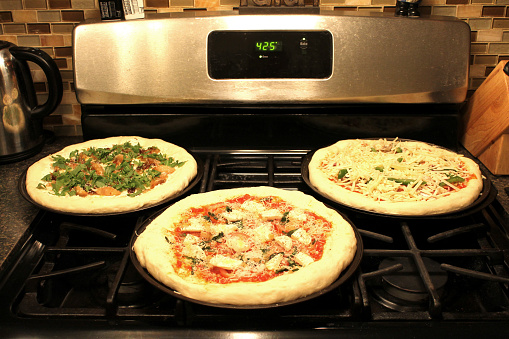
Image credits: Pixabay.com
Making stovetop skillet pizza is the most common method of cooking pizza without an oven. The skillet over a gas or electric stove can offer the same conditions as an oven, perhaps even better for making pizza. Here’s a step-by-step stovetop pizza recipe.
Step 1: Knead Your Pizza Dough and Let It Rest
Pizza is as good as its crust, so your dough must be on point. You can use store-bought dough, but it can influence the taste of your pizza. Making your own pizza dough is a better option, but it needs a keen eye and gentle hands.
Start by adding yeast or baking powder to a bowl with lukewarm water. Let the mixture sit for around ten minutes: ample time for the yeast to completely dissolve in the water. Once the yeast dissolves, you will notice some bubbles forming on the mixture.
Add about two cups of all purpose flour, two teaspoons of salt, and one teaspoon of sugar to the bowl with the yeast mixture. Stir the mixture using a wooden spoon or spatula until the dough appears shaggy.
The dough will not have proper consistency at this point, so you can switch from using a spatula to mixing with your hands. Knead the pizza dough consistently for about 10 minutes until the mixture is homogeneous. Next, transfer the dough to a floured surface for easy kneading. Stretch, fold and squeeze the dough until it is smooth and easy to handle.
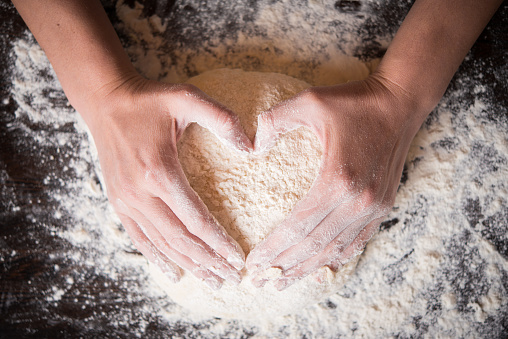
Image credits: Pixabay.com
Pro Tip: Sticky dough is unsuitable for creating a crunchy crust, so add some flour during the kneading process until you can achieve the desired result. On the other hand, you can apply water to your hands when kneading to deal with excessively thick pizza dough.
Once you are done kneading, let the pizza dough rise for around one hour. Cover the dough in a bowl using a kitchen towel and wait for it to rise.
Step 2: Prepare the Toppings in Advance
Stovetop pizzas take shorter periods of time to get ready, so you might not get another chance to prepare toppings once you start. Prepping the toppings as you wait for the dough to rise makes the process less hectic. Slice up any tomatoes, onions, mushrooms, and peppers on your favorite toppings list and set them aside.
Step 3: Roll and Cook Pizza Dough

Image credits: Pixabay.com
Now your dough will have doubled in size: Knead it once more to eliminate air pockets that might have developed. Then, divide the dough into equal pieces depending on your desired stovetop pizza size.
Roll the cut-out pieces using a rolling pin to make a circle base, the size of your skillet.
Place your cast iron skillet or non-stick frying pan on the stove over medium to high heat. Then, brush on a bit of cooking oil on the pan as it warms. Do this on the entire skillet base until the oil coats your pan before you start cooking.
Transfer the rolled pizza dough to the pan and cook for one minute before flipping it over. At this stage, the pizza base is now ready to hold all other ingredients when making your pizza.
Step 4: Carefully spread the Pizza Sauce and Put Your Favorite Toppings
Spread a generous amount of paste on your pizza base using a spoon while avoiding getting burnt by the hot skillet. The toppings go next above the tomato sauce or paste to give your pizza its unique taste.
Pro tip: Leave an inch of space around the edge of your pizza base when applying the pizza sauce. This space will be your pizza crust and is often harder than the rest of your pizza.
Step 5: Cover and Let It Cook to Perfection
At this point, everything is set, and your pizza is taking shape. Cover your skillet using a lid and let the pizza cook on low heat for about 5 minutes. The lid traps some heat that causes cheese melts and helps cook the toppings. After five minutes, your cheese should have melted, and the base will have achieved a golden brown color: This indicates your pizza may be ready.
Step 6: Serve It Up!
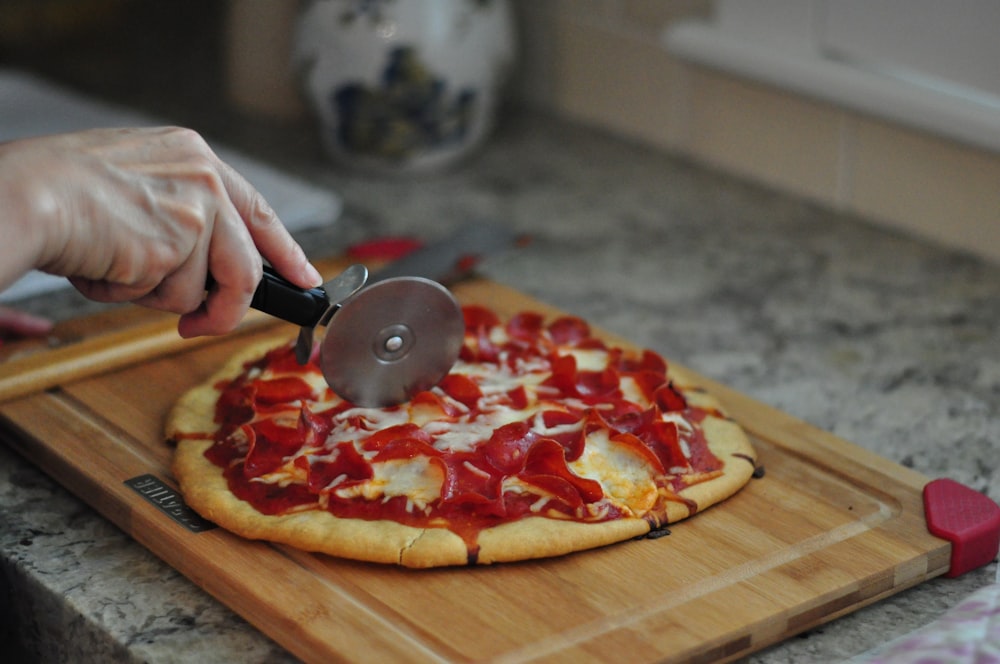
Image credits: Unsplash.com
Once the pizza is ready, remove it from the skillet and set it on a cutting board. Cut the pizza into equal slices using a pizza cutter or kitchen knife. Then, let the pizza cool for a few minutes. This allows the cheese melts to solidify before you can enjoy a slice.
Making Pizza on a Grill
Grilling pizza is also a common technique for making pizza at home without an oven. While the result is not so different, the pizza creation process can be pretty unique. Consider using the best grill for pizza to get amazing results.
Here’s how!
Step 1: Preheat the Grill
Regardless of if you are using a propane or charcoal grill, preheating is essential for making pizzas. Preheat your grill to about 316℃ (600 degrees Fahrenheit). This allows the pizza to have beautifully charred grill lines on the crust. You will also achieve a crispier pizza.

Image source: youtube.com
Step 2: Prepare the Dough Before Grilling
Like in skillet pizzas, you have to roll your homemade pizza dough into a circle. Before setting the rolled dough on your grill, brush some olive oil onto one side of the base. Brushing oil prevents the dough from developing a darker crust when placed on the grill.
Step 3: Cook Your Crust to Desired Crispiness
Place the pizza base on your grill with the oiled side facing down. Brush on some extra oil on the side facing up before flipping it over. Let the dough cook for about 3 minutes before flipping it. This allows the pizza base adequate time to cook, avoiding the taste of raw dough in your pizza slice.
Step 4: Add Paste and Toppings, Then Let the Pizza Cook
Immediately you flip the pizza base, spread sauce on the charred crust face. Also, include the desired toppings depending on your preferred taste. Top off your pizza with shredded cheese and cover the grill to let everything cook properly. Give your pizza about 5 minutes and check on it to see if it looks done.
Note: Grill temperatures can be quite hot, so avoid cooking your pizza for long.
Step 5: Let the Pizza Cool Slightly, Then Serve
Remove your pizza from the grill once it looks done, and set it on a cutting board. Slice the pizza equally and wait for it to cool and solidify before enjoying your creation.
Benefits of Homemade Pizza
Pizza is among the most popular family delicacies, ideal for snacking, dinners, and even family events. Despite pizza companies and local pizzerias making the dish available within a single call, you might have thought, “how about making it myself at home?” Actually, homemade pizza will taste better since it is fresh, unlike the frozen pizza your local pizzeria might be sending you. Let’s look at why making pizza at home may be for you!
1. Brings the Family Together
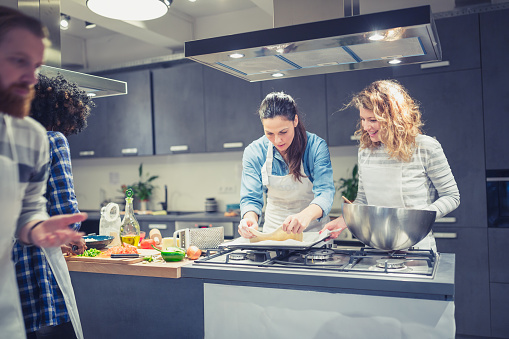
Image credits: Pexels.com
It’s no secret: Doing things together with your family members and loved ones helps you bond while making tedious activities fun. Making pizza is no exception! – Involve the entire family throughout the pizza-making process.
Divvy up the various tasks among your family members. Provide your kids with a checklist and let them help you gather all the ingredients you need. Put your spouse on chopping duty to help you get the pizza sauce and all the necessary toppings, like onions, tomatoes, and grated cheese, ready. Other family members can help you knead the pizza dough or clean utensils you will use for a wholesome experience.
Making pizza cooking a family event allows you to catch up with everyone after a busy day. Trust me, the mess in your kitchen will be worth it in the end.
2. It Is a Welcome Surprise
While pizza making may seem easy, it’s a skill that most people cannot hack. As a result, most families opt for ordering in to avoid the frustration of cooking a lousy pizza. You can surprise everyone by making pizza for the holidays.
To make it an ultimate surprise, let everyone have a bite of the pizza slice first and ask what they think. Then, tell them you cooked it and watch the surprise on their faces.
3. Saves You Money

Image credits: Pexels.com
Pizzerias enjoy economies of scale with large-scale production, so they keep the cost of standard pizzas low to make them affordable. However, if you need large or jumbo pizzas for the family, you might have to dig deeper into your pockets.
Making pizza at home allows you to save some money. At first, the ingredients (fresh) can be costly, but you can find amazing deals for such products in the market. The cost is worth it if you intend on making more than one jumbo pizza for the family: everyone eats to their fill, and you save money.
4. Polish Up on Your Pizza Making Skills
Pizza making can be a relatively complex skill that takes time to hack. However, repeating the process regularly at home can help you polish existing skills. Over time, you can comfortably cook pizza like a pro.
Having outstanding pizza-making skills allows you to indulge in new hobbies. You can also start a side hustle and earn extra cash by selling pizzas to locals or workplace acquaintances.
5. You Control the Ingredients and Cooking Process
Does the pizza from your local pizzeria fail to satisfy your taste buds? Is it because of the poor-quality crust or minimal toppings? Well, you should have a go at making your own pizza at home. Homemade pizzas allow you to control the ingredients and your pizza’s cooking process for the ultimate taste.
Pizza companies batch-produce frozen pizza, so they barely pay attention to a proper pizza recipe. On the other hand, you can personally include everything you want on your pizza. Since you control the cooking process, you can cook a crispy pizza crust; just how you like it! To top it all off, you eat your pizza fresh and at the right temperature since reheating can make a slice gross.

Image credits: Pexels.com
Conclusion
Contrary to popular belief, you can make pizza without an oven. Stovetop, whether skillet pizza or grilled pizza, can be tastier than store-bought options since they are fresh, and you get control over the ingredients and cooking process. The homemade pizza is perfect for your family and guests at your pizza party since you can make enough slices and still save money. You also polish your pizza-making skills while enjoying the authentic pizza experience.
Featured image credits: Pixabay.com

